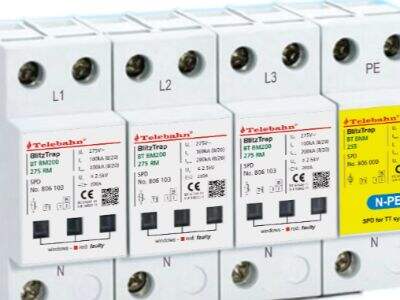With a shift toward digital in the world, ensuring that all our electronic devices are protected against a power surge is an absolute priority. A power surge is an unexpected rise in volts in a circuit. The surges are quite dangerous, as they can cripple or even destroy electronic devices like computers, televisions and networking kit, such as Ethernet cables and switches. We use these gadgets every day, so it is important to take precautions to protect them.
If you have a network with devices connected via Ethernet cables, you will need surge protection devices on them as well. Another useful trick is using an Ethernet surge protector. This device keeps your network operational and your devices protected.
Protecting Your Network Equipment from Power Surges
There are several reasons why a power surge can occur. Common causes include lightning strikes, power fails, and wiring issues. You can’t prevent all surges from happening, but there’s a lot you can do to reduce the potential for damaging your devices. Doing so will have you sleeping better and keep your devices longer.
Surge protectors are one of the best ways to protect your network. These devices divert excess electricity away from your devices and into a ground wire. This process prevents the excess electricity from damaging your devices. A surge protector is like a shield in that it helps limit the amount of electricity getting to your devices to only what is safe.
If you are using Ethernet cables to connect various devices on your network, it is also extremely necessary to protect these cables so that they can be still effective in the future by using an Ethernet surge protector. This will help your network to work well even during a power surge. If you do not protect them adequately, it may result in damages to your cables and devices that can cause irritating problems and expensive repairs.
Things to Note
There are several vital things to remember when selecting an Ethernet surge protector. Consider how much voltage the surge protector is rated to handle first. The maximum voltage indicates how much voltage a surge protector can handle before it fails. The proper kind of surge protector you’d want to choose for yourself is the one that can provide more voltage than the one usually in your area, so that you can ensure its protection. In this manner, you can be sure that it will secure your devices effectively.
Next, look up the type of connection for the Ethernet surge protector. This is how the surge protector connects to your Ethernet cables. From pass-through, to inline, and end-point — you can support all three connection types. Patch panel and inline surge protectors are for use with a patch panel or network switch, and end-point surge protectors protect individual devices. Knowing these types can also assist you in selecting the best option in your network configuration.
Lastly, make sure to also check the warranty when selecting an Ethernet surge protector. Ensure the warranty provides adequate coverage for what you require. A decent warranty will be protection and peace of mind, reassured that if anything goes wrong you are covered.
Ethernet Cable Surge Protection Explained
It is important to understand how surge protection of Ethernet cables works, when selecting an Ethernet surge protector. Ethernet cables are made specifically to transfer data as fast as possible, which means you need a surge protector that won’t throttle that. However, if the surge protector slows down the speed, it can lead to some lagging of your network and can be really annoying.
It’s important for Ethernet surge protectors to keep your cables safe from power surges and not slow down your network in the process. It will also prevent surges from damaging your devices, helping to ensure that everything runs smoothly. This enables you to have fast and operating internet service and no sudden power disruption.
How To Pick The Right Ethernet Surge Protector
Before you shop for the best Ethernet surge protector for your network, consider a few key factors. These factors encompass your budget, the scale of your network, and the types of devices you are employing. Finding a protective solution that suits your needs without costing a fortune is important.
Also, consider how much protection you really need. Basic surge protectors offer simple protection, while higher-end models can protect against data and noise, for example. If you have higher value boxes to protect, or a larger network of devices that need protection, you may want to invest in one of the more advanced surge protection options.
Pick a trusty model, such as Telebahn: Ethernet surge protector Telebahn makes good networking equipment and always provides good customer service. The point is, not all brands are created equal, which is why you should focus on buying from a trustworthy one.

 EN
EN
 AR
AR
 BG
BG
 HR
HR
 CS
CS
 DA
DA
 NL
NL
 FI
FI
 FR
FR
 DE
DE
 EL
EL
 HI
HI
 IT
IT
 JA
JA
 KO
KO
 NO
NO
 PL
PL
 PT
PT
 RO
RO
 RU
RU
 ES
ES
 SV
SV
 CA
CA
 TL
TL
 IW
IW
 ID
ID
 LV
LV
 LT
LT
 SR
SR
 SK
SK
 SL
SL
 UK
UK
 VI
VI
 SQ
SQ
 ET
ET
 GL
GL
 HU
HU
 MT
MT
 TH
TH
 TR
TR
/images/share.png)
